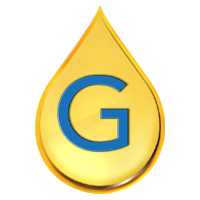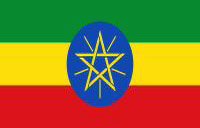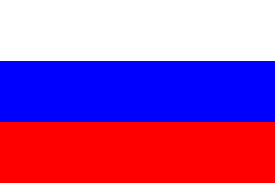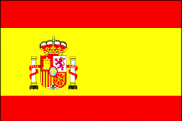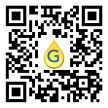
Jack Steinberger Ph.D.
Nobel Prize in Physics 1988
National Medal of Science - Physical Sciences 1988 USA
Nobel Prize shared with Leon M. Lederman, Melvin Schwartz
Physicist, Cosmologist, Astrophysicist. Hobbies: Playing the Flute, Tennis, Mountaineering, Sailing.
To Ganga Library founder on 3 Aug 2014, "I have used your questions to me as an incentive to prepare a list of my publications".
Publications
- "On the Production of Cosmic Ray Mesotrons by Primary Protons", Marcel Schein and J. Steinberger. Physical Review, Letters to the editor, 1947. Comments: a calculation.
- "On the Range of the Electrons in Meson Decay", J. Steinberger, Phys. Rev. 75, #8, 1136,(1949). Comment: This was my thesis under Enrico Fermi. It showed that the spectrum is a continuum, and, as was seen by others, but not by Fermi and myself, that if this is combined with the muon lifetime, it demonstrated, together with the Fermi β decay theory, the Universal Fermi Interaction.
- "On the Use of Subraction Fields and the Lifetimes of Some Types of Meson Decay", J. Steinberger, Phys. Rev. 76, #8, 1180,(1949). Comment: First use of the "Triangle".
- "On the Polarization of Slow Neutrons", J. Steinberger and G.C. Wick, Phys. Rev.Vol?, Letters to the Editor,994,(1949).
- "The Positive-Negative Ratio for π-mesons Produced Singly in Collisions of Nucleons with Complex Nuclei", G. F. Chew and J. Steinberger. Letters to the Editor, Phys.Rev., Vol?,497(1950).
- The Detection of Artificially Produced Photo-Mesons with Counters", J. Steinberger and A. S. Bishop, Phys. Rev. 78, 493(1950).
- "Preliminary Results on the Production of mesons by Photons on Carbon and Hydrogen", J. Steinberger and A. S. Bishop, Phys. Rev. 78,494,(1950). Comment: First research on the properties of π-mesons using scintillation counters, then made of the organic chemical stilbene, instead of nuclear emulsions. The photons were produced on a target in the 300 MeV electron synchrotron invented and built by Edward McMillan at Berkeley.
- "Evidence for the Production of Neutral Mesons by Photons", J. Steinberger, W. K. H. Panofsky and J. Steller, Phys. Rev. 78, 802,(1950). Comment: Discovery of the neutral pion.
- "Measurement of the Positive π-μ Decay Lifetime", O. Chamberlain, R. F, Mozley, J. Steinberger, and C. Wiegand, Phys. Rev. 79,349(1950). Comment: Previous measurements, by Richardson and by Marinelly and Panofsky, had used the survival of the pion as function of distance, measured using photographic emulsions The technology of this experiment,, largely due to Wiegand, used photos of the muon pulse on an oscilloscope whose trace was triggered by the stopped pion. Result: τ = (2.6+/-.10)X10-8sec. In comparison, the uncertainties of Richardson and Martinelly and were 4 and 2 times larger, respectively.
- "Production of Positive Mesons by Photons on Hydrogen", A. S. Bishop, J. Steinberger and L. J. Cook, Phys. Rev. 80, 291 (1950).
- "Detection of Positive π-Mesons by π+ Decay", M. Jakobson, A. Schultz and J. Steinberger, Phys. Rev. 80?,894(1951). Comment: The experiment yielded a better value for the pion lifetime, τπ = (1.76+/-.08)X10-8sec.
- "Total Cross Sections of π-mesons on Protons and Several Other Nuclei", C. Chedester. P. Isaacs, A. Sachs, and J. Steinberger, Phys. Rev 80?,957,(1951).
- "Neutral Mesons Produced in the Capture of π- Mesons in Hydrogen", A. Sachs and J. Steinberger, Phys. Rev. 83, 855(1951).
- "The Spin of the Pion via the Reaction π+ + d ⇌ p + p", R. Durbin, H. Loar and J. Steinberger, Phys. Rev. 83,646(1951). Comments: This was clearly a very important contribution.
- "The Absorption of Pions by Deuterons", R. Durbin, H. Loar and J. Steinberger, Phys.Rev. 84,581,(1951).
- "A Theoretical Analysis of the Process π+ + d ⇌p + p", G. P. Chew, M. L. Goldberger, J. Steinberger and C. N. Yang, Phys.Rev.84,581,(1951).
- "Total Cross Sections of 60 MeV Mesons in Hydrogen and Deuterium", J. Isaacs, A. M. Sachs and J. Steinberger, Phys.Rev. 85,803(1952).
- "Further Results on the Production of Neutral Mesons by Photons", W. K. H. Panofsky, J. Steinberger and J. Steller, Phys.Rev. 86,180(1952).
- "The Internal Pair Production of γ-Rays of Mesonic Origin; Alternate methods of π0 decay", P. Lindenfeld, A. Sachs and J. Steinberger, Phys.Rev.89,531(1953). Comments: The internal conversion of γ-rays in π0 decay and in charged pion - proton interactions has been observed, and measured, β = .0080± .0016,in agreement with expectation.
- "The Mass Difference of Neutral and Negative π Mesons", W. Chinowsky and J. Steinberger, Phys.Rev.93,586(1953). Comment: mπ- - mπ0 = 8.8± .06 μe.
- "Differential Cross Sections for the Scattering of 58 Mev p+ Mesons in Hydrogen", D. Bodansky, A. Sachs and J. Steinberger, Phys. Rev.90, 996(1954). Comments: Pion scattering on Hydrogen was measured at about the same time at the Chicago cyclotron, led by Fermi, and at the Columbia cyclotron. With pion beams up to 135 Mev, the Chicago experiment outranked the Columbia experiment by a factor of two. This, as well as the superior theoretical insight of Fermi, made it possible for Chicago to see the important resonance, not possible for us at Columbia.
- "Scattering of 65-Mev Pions in Hydrogen", D. Bodansky, A. M. Sachs and J. Steinberger, Phys.Rev.93,1367(1954)
- "Absorption of Negative Pions in Deuterium : Parity of the pion", W. Chinowsky and J. Steinberger, Phys.Rev.95,1561(1954). Comments: The angular correlation of the two neutrons from the Deuterium disintegration was observed, and this confirmed the negative parity of the pion and the nucleon.
- "Search for Improbable Meson Decays", S. Lokanathan and J. Steinberger, Phys.Rev.98,220(1955). Comment: This was presented at a meeting of the American Physical Society. It was shown that the branching ratio of the pion to electron and neutrino is less than 10-5, a result of substantial significance in an argument of G. Feinberg.
- "Electrons from Muon Capture", J. Steinberger and Harry B. Wolfe, Phys.Rev.100,1490(1955). Comment: An upper limit of 5x10-4 was obtained .
- "Reaction π- + d -->2n + π0; Parity of the Neutral Meson", Pys.Rev.100,1476(1955). Comment: This was not very important, since it was already known that the charged pion is pseudoscalar.
- "Search for the β-Decay of the Pion", S. Lokanathan and J. Steinberger, Supplemento al Volume II, Serie X del Nuovo Cimento, N. 1, 1955. Comment: Result: (π to e)/(π to μ) < 1/1000.
- "Properties of Unstable Produced by 1.3 Bev π- Mesons", R. Budde, M. Chretien, J. Leitner, N. P. Samios, M. Schwartz and J. Steinberger, Phys.Rev.103,1827(1956). Comment: Following the discovery by Mel Schwartz of the Barksdale valve, which made it possible to recompress the bubble chamber sufficiently quickly for an accelerator experiment, we were able to make an experiment with our 6 inch diameter propane filled chamber at the Brookhaven Cosmotron, the first ever bubble chamber experiment. Historically, the most interesting result is the search for parity violation in the correlation between Lamda production and decay angles, which was suggested to us by T. D. Lee. The observed asymmetry, N(0°-45°)N(45°-90°) = 20/11, was however statistically too weak to permit the claim of the violation of this symmetry, established the following year by C.S. Wu.
- "Demonstration of the Existence of the Σ0 Hyperon and a Measurement of its Mass", R. Plano, N. Samios, M. Schwartz and J. Steinberger, Il Nuovo Cimento, Vol.V, N. 1,216(1956).
- "Systematics of Λ0 and Θ0 decay", F. Eisler, R. Plano, N. Samios, M. Schwartz, and J. Steinberger", Il Nuovo Cimento Vol. V. N.6,1700(1957).
- "Ï€- - p Elastic Scattering at 1.44 Bev", M. Chretien, J. Leitner, N. P. Samios, M. Schwartz and J. Steinberger, Phys.Rev.108,383(1957).
- "Demonstration of Parity Nonconservation in Hyperon decay", Eisler, Plano, Prodell, Samios, Schwartz and Steinberger, Columbia U, Bassi, Borelli, Puppi, Tanaka and Waloschek, Bologna, Conversi, Francini, Mannelli, Santangelo and Silvestrini, Pisa and Glaser, Graves and Perl, Michigan, Phys.Rev.108,1353(1957). Comment: This may be of interest in connection with the later claims by L. Alvarez of first detection of parity violation in lamda decay.
- "Associated Production of Σ0 and Θ20; Mass of Σ0", F. Eisler, R. Plano, N. Samios, M. Schwartz and J. Steinberger, Phys.Rev.110,1192(1958). Comment: I do not know what the Θ2 refers to, perhaps it is the Ke3?
- "Experimental Determination of the Λ0 and Σ- Spins", Eisler et al, Il Nuovo Cimento, V0L. VII,222(1958).
- "Bubble Chamber Study of Unstable Particle Production in π- - p Collisions at 910, 960, 1200 and 1300 MeV",Eisler et al, Il Nuovo Cimento Vol. X,(1958).
- "β decay of the Pion", G. Impeduglia, R. Plano, A. Prodell, N. Samios, M. Schwartz and J. Steinberger, Phys.Rev. Letters 1,249(1958). Comments: The experiment shows 6 electron decays of the pion corresponding, within the large statistical error to theoretical expectations. The decay mode had been searched before, unsuccessfully, by Lokanathan and myself, in 1953.
- "Parity of the Neutral Pion", R. Plano, A. Prodell, N. Samios, M. Schwarz and J. Steinberger, Phys.Rv.Lett.3,524(1959).
- "Parity of the Neutral Pion and the decay π0 → 2e+ + 2e-", N. P. Samios, R. Plano, A. Prodell, M. Schwartz and J. Steinberger, Phys.Rev.126,1844(1962).
- "Observation of High Energy Neutrino Reactions and the Existence of Two Kinds of Neutrinos", G. Danby, J-M. Gaillard, K. Goulianos, L.M. Lederman, N. Mistry, M. Schwartz, and J. Steinberger, Phys.Rev.Lett.9,36(1962). Xommwnt: The experiment suggested by Bruno Pontecorvo, for which Lederman, Schwartz and I received the Nobel Prize.
- "A 170-liter Heavy Liquid Bubble Chamber", A.G. Prodell and J. Steinberger, Review of Scientific Instruments 33,1327(1962).
- "Resonances in Strange Particle Production", D. Colley, N. Gelfand, U. Nauenberg, J. Steinberger and S. Wolf, Columbia, and H. R. Brugger, P. R. Kramer, and R. J. Plano, Rutgers Univ., Phys.Rev.128,1930(1962).
- "Production of Pion Resonances in π+ p Interactions", C. Alff, D. Berley, D.Colley, N. Gelfand, U. Nauenberg, D. Miller, J. Schulz, J. Steinberger, Columbia, and H. Brugger, P. Kramer and R. Plano, Rutgers, Phys.Rev.Lett.9,323(1962).
- "Determination of the Σ-Λ Relative Parity", C. Alff, N. Gelfand, U. Nauenberg, J. M. Nussbaum, J. Schultz and J. Steinberger, Columbia, H. Brugger, L. Kirsch, and R. Plano, Rutgers, and D. Berley and A. Prodell, Brookhaven, Phys.Rev.137,B 1105(1965).
- "Lifetime of the w Meson", N. Gelfand, D. Miller, M. Nussbaum, J. Ratau, J. Schultz, J. Steinberger and T.-H. Tas, Columbia, and L. Kirsch and R. Plano, Rutgers, Phys.Rev.Lett.11,436(1963).
- "Compilation of Results on the Two-Pion Decay of the w", G. Luetjens and J, Steinberger, Phys.Rev.Lett.12,517(1964).
- "Test of Charge Conjugation Invariance in p-bar - p Annihilation at Rest", C. Balthay, N. Barash, P. Franzini, N. Gelfand, L. Kirsch, G. Luetjens, J.C. Severiens, J. Steinberger, D. Tycho and D. Zanello, Phys.Rev.Let.15,591(19675). Comment: Experiment at BNL, in Columbia 30 inch hydrogen chamber. Bubble chambers increased in size rapidly, starting with our 6 inch chamber in '56, reaching more than 2 m in length or diameter, and dominated the experimental scene for two decades.
- "Test of Validity of ΔS = ΔQ Rule in K0 decay", L. Kirsch, R. J. Plano and J. Steinberger, Columbia U, and P. Franzini, BNL. Phys.Rev.Lett.15,35(1964).
- "Weak Interaction of Kaons", J.S. Bell and J. Steinberger, Proceedings of Oxford Intl. Conf., Rutherford H,E. Lab,195(1965), Comments: I consider this the most interesting paper to which I contributed. After the discovery of CP violation by Christenson, Cronin, Fitch and Turlay, I had the idea (see T.T. Wu and C.N. Yang, Phys.Rev.Lett.13,501(1964), that the way to study CP violation in K0 decay is to use the time structure of the KS - KL interference, and then did experiments which implemented this. In his lecture, Bell evolved the important consequences of the K - K-bar mass matix and its unitarity.
- "KS and KL Interference in the π+π- Decay Mode, CP Invariance and the KS - KL Mass Difference", C. Alff-Steinberger, W. Heuer, K. Kleinknecht, C. Rubbia, A. Scribano, J. Steinberger, M.J. Tannenbaum and K. Tittel. Phys.Lett.20,207(1966).
- "Further Results from the Interference of KS and KL in the π+π- decay modes", C. Alff-Steinberger et.al., Phys.Lett.21,5(1966).
- "Regeneration phase and the Relative Phase of KL in the π+π- decay", C. Rubbia and J. Steinberger, Phys.Lett.24B,531(1967).
- "Measurement of the Charge Asymmetry in the Decay KL → π± + e± + ν", S.Bennett, D. Nygren, H. Saal, J. Steinberger and J. Sunderland, Phys.Rev.Lett.19,993(1967)
- "Measurement of the KS - KL Regeneration Phase in Copper at 2.5 GeV/c", S. Bennett, D. Nygren, H. Saal, J. Sunderland and J. Steinberger, Phys.Lett.27B,239(1968).
- "η+- Phase, Re ε and the Superweak Model", S. Bennett, D. Nygren, H. Saal, J. Steinberger and J. Sunderland, Phys.Lett.27B,244(1968).
- "The ΔS= ΔQ Rule in the decay K0 → e± + ν + π", S.Bennett, K. Kleinknecht, D. Nygren, H. Saal, J. Steinberger and J. Sunderland, Phys.Lett.27B,248(1968).
- "KS - KL Regeneration Amplitude in Copper at 2.5 GeV/c and phase of η+-", S.Bennett, D. Nygren, H. Saal, J. Steinberger and J. Sunderland, Phys.Lett.29B,317(1969).
- "Construction and Performance of Large Multiwire Proportional Chambers" P.Schilly, P. Steffen, J. Steinberger, T. Trippe, F. Vannucci and H. Wahl, CERN, and K. Kleinknecht and V. Lueth, U. Heidelberg, Nuclear Instruments and Methods 91,221(1971). Comments: ~1968 George Charpak made the great discovery of multi wire proportional chambers, but he experimented with miniscule chambers, ~ 10cm * 10 cm. the Construction of chambers of useable size turned out to be a challenge, chiefly because longer wires under the chamber voltage were unstable and sparked. It turned out to be necessary to stabilise the wires, which we managed to accomplish with the help of platic fibers, woven transverse to the wire direction, largely the work of Trippe.
- "Charge Asymmetry in Ke3 Decay and Ree", J. Marx, D. Nygren, J. Peoples,T. Kirk and J. Steinberger, Phys.Lett.32B,219(1970).
- "Charge Asymmetry in the Decay KL → π+ π-π0 ", A.Scribano, I. Mannelli,G. Pierazzini, U. Pisa, J.Marx, D. Nygren, J. Peoples, Columbia U, T. Kirk, Harvard and J. Steinberger, Columbia and CERN, Phys.Lett32B,224(1970).
- "A large Multiwire Proportional Chamber Spectrometer", J.H. Diepering, P. Steffen, J. Steinberger, T. Trippe, CERN, H. Filthuth, K. Kleinknecht, V. Lueth, P. Mokry, H. Schneider, M. Vysocansky and G. Zech, U. Heidelberg, Submitted to the Intl. Conf. on Instrumentation for High-Energy Physics, Dubna, Sept. 1970.
- "Measurement of the Total Cross-Section for Λ hyperon Interactions on Protons and Neutrons ",in the Momentum Range from 6 GeV/c to 21 GeV/c", S. Gjesdal, G. Presser, P. Steffen, J. Steinberger and H. Wahl, CERN,and K. Kleinknecht, V. Lueth, and G. Zech, U. Heidelberg, Phys.Lett. 40B,152(1972). Comment: I think that this is the first measurement of the interaction of hyperons.
- "Search for the Decay KS → 2μ", G. Gjesdal, G. Presser, P. Steffen, J. Steinberger, F. Vannucci and H. Wahl, C ERN, and H. Filthuth, K. Kleinknecht, V. Lueth and G. Zech, U. Heidelberg, Phys.Lett.44B, 217(1973).
- "Measurement of the Charge Asymmetry in the Decays K0 → π± e± ν and K0 → π± μ ± ν" , C. Geweniger, S. Gjesdal, T. Kamae, C. Presser, P. Steffen, J. Steinberger, F. Vannucci and H. Wahl, CERN, and F. Eisele, H. Filthuth, K. Kleinknecht, V. Lueth and G. Zech, U. Heidelberg, Phys.Lett. 48B,483(1974).
- "A New Determination of K0 → π+ π- Decay Parameters", C. Geweniger, S. Gjesdal, G. Presser, P.Steffen, J. Steinberger, F. Vannucci and H. Wahl, CERN, and F. Eisele, H. Filthuth, K. Kleinknecht, V. Lueth and G. Zech, U. Heidelberg, Phys.Lett.48B,487(1974).
- "Measurement of the Kaon Mass Difference, mL - mS by the Two Regenerator Method", C. Geweniger, S. Gjesdal, G. Presser, P.Steffen, J. Steinberger, F. Vannucci and H. Wahl, CERN, F.Eisele, V. Lueth, and G. Zech, U. Heidelberg and K. Kleinknecht, U. Dortmund, Phys.Lett. 52B,108(1974).
- "A Measurement of the KL - KS Mass Difference from the Charge Asymmetry in the Semi-leptonic Kaon Decays",G. Gjesdal, G. Presser, T. Kamae, P. Steffen, J. Steinberger, F. Vannucci and H. Wahl, CERN, F. Eisele, H. Filthuth, V. Lueth and G. Zech, U. Heidelberg,and K. Kleinknecht, U. Dortmund, Phys.Lett.52B,113(1974). Comment: Two very differejnt and precise measurents, demonstrating that our knowledge of CP violation in K0 is in good order.
- "The Phase, Φ+-, of CP Violation in the K0 → π+π- Decay", S. Gjesdal, G. Presser, P. Steffen, J. Steinberger, F. Vannucci and H. Wahl, CERN, F. Eisele, H. Filthuth, V. Lueth and G. Zech, U. Heidelberg, and K. Kleinknecht, U. Dortmund,Phys. Lett.52B,119(1974).
- "Measurement of the Electromagnetic Interaction of the Neutral Kaon", F. Dydak, C. Geweniger, F. L. Navarria, P. Steffen, J. Steinberger, F. Vannucci, H. Wahl and E.G.H. Williams, CERN, and F. Eisele, K. Kleinknecht and V. Lueth, U. Heidelberg, Nuclear Physics B102,253(1976).
- Measurement of the Antilamda-Proton Total Cross-Section in the Momentum Range from 4 to 14 GeV/c", F. Eisele, C. Geweniger, K. Kleinknecht, U. Dortmund, F. Dydak, P. Steffen, J. Steinberger, F. Vannucci, H, Wahl and E.G.H. Williams, CERN, and V. Lueth, and G. Zech, U. Heidelberg, Phys. Lett.60B,297(1976)
- "Measurement of the Vector Form Factor in the Decay KL → π e ν", G. Gjesdal, K. Kamae, G. Presser, P. Steffen, J. Steinberger, F. Vannucci and H. Wahl, CERN, and F. Eisele, K. Kleinknecht, V. Lueth and G. Zech, U. Heidelberg, Nuclear Physics B 109, 118(1976).
- "Study of the Photon Spectrum in the Decay KS → π+π-γ", H. Taureg, G. Zech, U. Heidelberg, F. Dydak, F.L. Navarria, P. Steffen, J. Steinberger, H. Wahl, E.G.H. Williams, CERN, and C. Geweniger and K. Kleinknecht, U. Dortmund, Phys.Lett.65B,92(1976).
- "Measurement of the Σ0 Lifetime", F. Dydak, F.L. Navarria, O.E. Overseth, P. Steffen, J. Steinberger, H. Wahl, and E.G.H. Williams, CERN, F. Eisele, C. Geweniger and K. Kleinknecht, U. Dortmund, and H. Taureg and G. Zech, U. Heidelberg, Nuclear Physics B118,1(1977).
- "Opposite sign Dimuon Events Produced in Narrow Band Neutrino and Antineutrino Beams", CDHS, M. Holder et.al., Phys.Lett.69B,(1977). Comments: This is the first article of the CDHS neutrino experiment at CERN. CDHS stands for Cern, Dortmund, Heidelberg and Saclay. CDHS was the most capable neutrino detector, and permitted accurate measurements of neutrino interactions in iron as well as in hydrogen and deuterium. CDHS articles are typically signed by ~ 35 authors. This article reports on the observation of 315 dimuon events. Results are in accordance with the expectations of the standard model.
- "Measurement of the Neutral to Charged Current Cross Section Ratio in Neutrino and Antineutrino Interactions", CDHS, M. Holder et.al., Phys. Lett.71B,222(1977).
- "Study of Inclusive Neutral Current Interactions of Neutrinos and Antineutrinos", CDHS, M. Holder et.al., Phys.Lett.72B,254(1977).
- "Opposite Sign Dimuon Events Produced in Narrow Band Neutrino and Antineutrino Beams", CDHS, M. Holder et.al., Phys.Lett.?1977).
- "Is there a High-y Anomaly in Antineutrino Interactions?" CDHS, M. Holder et.al.,Phys. Rev. Lett.?(1977). Comments: A high-y "anomaly" had been observed at FNAL. This was shown not to be correct.
- "A Detector for High Energy Neutrino Interactions" CDHS, M Holder et.al., Nuclear Instruments and Methods 148,235(1978).
- "Performance of a Magnetized Total absorption Calorimeter Between 15 GeV and 140 GeV", CDHS, M. Holder et.al., Nuclear Instruments and Methods 151,69(1978).
- "Like Sign Dimuon Events Produced in Narrow Band Neutrino and Antineutrino Beams", CDHS, M. Holder et.al., Phys.Lett.79B,396(1977).
- "Study of Inclusive Neutral Current Interactions of Neutrinos and Antineutrinos", CDHS, M. Holder et.al., Phys.Lett.72B,254(1977).
- "Observation of Neutrino Events with Four Energetic Muons", CDHS, M. Holder et.al., Phys.Lett.73B,105(1978).
- "Results of a Beam Dump Experiment at the CERN SPS Neutrino Facility", CDHS, T. Hansl et.al., Phys.Lett.74B,139(1978).
- "Search for Single Positive Muon Production in Neutrino Interactions", CDHS, M. Holder et.al., Phys.Lett.74B,277(1978).
- "Origin of Trimuon Events in High Energy Neutrino Interactions", CDHS, T. Hansl et.al., Phys.Lett.77B, 114(1978).
- "Characteristics of Trimuon Events Observed in High-Energy Neutrino Interactions", CDHS, T. Hansl et.al., Nuclear Physics B142,381(1978).
- "Investigation of Like-Sign Dimuon Production in Neutrino and Antineutrino Reactions", CDHS, J.G.H. de Groot et.al., Phys.Lett.86B,103(1979).
- "Inclusive Interactions of High-Energy Neutrinos and Antineutrinos in Iron", CDHS, J.G.H. de Groot et.al., Z. Physik C, Particles and Fields 1,143(1979). Comments: This article contains the nuclear structure functions.
- "Comparison of Moments of the Valence Structure Function", CDHS, J.G.H. de Groot et.al., Phys.Lett.82B,292(1979).
- "QCD Analysis of Charged-Current Structure Functions", CDHS, J.G.H. de Groot et.al., Phys.Lett.82B,456(1979).
- "Trimuon Events Observed in High-Energy Antineutrino Interactions", CDHS, J.G.H. de Groot et.al., Phys.Lett.85B,131(1979).
- "Investigation of Like-Sign Dimuon Production in Neutrino and Antineutrino Reactions", CDHS, J.G.H. de Groot et.al., Phys.Lett.86B,103(1979).
- "The Response and Resolution of an Iron-Scintillator Calorimeter for Electro-magnetic Showers Between 10GeV and 140GeV", CDHS, H. Abramovitz et.al., Nuclear Instruments and Methods 180, 429(1981).
- "A Measurement of the Ratio of Longitudinal and Transverse Structure Functions in Neutrino Interactions between 30 and 200 GeV", CDHS, H. Abramowitz et.al., Phys.Lett.107B,141(1981).
- "Determination of the Gluon Distribution in the Nucleon from Deep Inelastic Neutrino Scattering", CDHS, H. Abramovitz et.al., Z. Phys. C12,289(1981).
- "Limit on Right Handed Weak Coupling Parameters from Inelastic Neutrino Interactons", CDHS, H. Abramovitz et.al., Z. Phys. C 12,225(1982).
- "Evidence for Ψ Production by Neutrinos via Neutral Currents", CDHS, H. Abramowitz et.al., Phys.Lett.109B.
- "Experimental Study of Opposite Sign Dimuons Produced in Neutrino and Antineutrino Interactions", CDHS, H. Abramowitz et.al., Z.Phys. C - Particles and Fields 15,19(1982).
- "Neutrino and Antineutrino Charged Current Inclusive Scattering in Iron in the Energy Range 20 < Eν < 300 GeV", CDHS +IHEP, Beijing, H. Abramowitz et.al., Z. Phys. C Particles and Fields 17,283(1983). Comment: Structure functions.
- "A search for νμ Oscillations in the Δm2 range 0.3 - 90 eV2", CDHS + U. Warsaw, F. Dydak et.al., Phys.Lett.134B,281(1983).
- "Measurement of Neutrino and Antineutrino Structure Functions in Hydrogen and Iron", CDHS, H. Abramowitz et.al., Z.Phys C - Particles and Fields 25,29(1984).
- "Measurement of the Neutral to Charged Current Cross Section Ratios in Neutrino and Antineutrino Nucleon Interactions and Determination of the Weinberg Angle", CDHS, H. Abramovitz et.al., Z. Phys. C - Particles and Fields 28,51(1985).
- "Are There Prompt Like-Sign Dimuons?", CDHS and U. Warsaw and IHEP, Beijing, H. Burkhardt et.al., Z. Phys. C - Particles and Fields 31,39(1986).
- "A Precision Measurement of sin2ΘW from Semileptonic Neutrino Scattering", CDHS and U. Warsaw, Phys.Rev.Lett. 57,298(1986).
- "Total Neutrino and Antineutrino Charged Current Cross Section Measurements in 100, 160, and 200 GeV Narrow Band Beams", CDHS and U. Warsaw, P. Berge et.al., Z. Phys. C - Particles and Fields 35,443(1987).
- "The Beam and Detector for a High-Precision Measurement of CP Violation in Neutral-Kaon Decays", H. Burkhardt et.al., Nuclear Instruments and Methods A268,116(1988).
- "Observation of the Decay KS→2γ and Measurement of the Decay Rates KL→2γ and KS→2γ", CERN-Dortmund-Edinburg-Mainz-Orsay-Pisa-Siegen Collaboration, H. Burkhardt et.al.,Phys.Lett. B 199,139(1987). Comment: Results: Γ(KL→2γ)/Γ(KL→2π0) = 0.632 ±0.004±0.008 and Γ(Ks→2γ)/Γ(KL→2γ) = 2.3± 1.0 ±0.4. First Observation of KS→2γ .
- "First Observation of Direct CP Violation", H. Burkhardt et.al., Pys.Lett. B 206,169(1988). Comment: This experiment was suggested by myself and led by H. Wahl.
- "Experiments with High-Energy Neutrino Beams", Nobel lectures in physics 1988, Reviews of Modern Physics, 61, July 1989.
- "A Measurement of differential Cross-Section and Nucleon Structure Functions in Charged Current Neutrino Interactions on Iron", CDHS and U. Warsaw, P. Berge et.al., Z. Phys. ?(1989)
- "Prompt Neutrino Results From a Proton Beam DumpmExperiment", CDHS and U. Warsaw, P. Berge et.al., Z.Phys. C - Particles and Fields 56,175(1992).
LEP Experiments with ALEPH Detector. ~ 400 authors.
- "Determination of the number of Light Neutrino Species", Phys.Lett. B 231,519(1989). Comment: This was the first result, and perhaps the most important, obtained at LEP. A few weeks after turn on. ALEPH was the only one in the 4 LEP expriments which saw that a measurement of the magnitude of the Z peak can permit this measurement more quickly. This requires measurement of the luminosity, which ALEPH managed to provide, and consequently obtained a signicant result some weeks before the other three experiments.
- "Properties of Hadronic Events in e+e- annihilation at 91 GeV", Phys.Lett. B 234,209(1990).
- "Determination of the Leptonic Branching Ratios of the Z", Phys.Lett. B 234,399(1990).
- "Resumé of the First Results of ALEPH at LEP" by J. Steinberger, Modern Phys. Lett. A 4,2319(1989).
- "A Precise Determination of the Number of Families with Light Neutrinos and of theZ Boson Partial Widths", Phys.Lett. B 235,(1990).
- "Search for the Higgs Boson from Z0 Decay", Phys.Lett. B 236,233(1990).
- "Search for Exited Leptons in Z0 decay", Phys.Lett. B 236,501(1990).
- "A Search for New Quarks and Leptons from Z0 decay at LEP", Phys.Lett. B 236,511(1990).
- "Search for Supersymmetric Particles Acoplanar Charged Particle Pairs from Z0 Decays" Phys.Lett. 236,86(1990).
- "Search for Neutral Higgs Boson from Supersymmetry in Z Decays", Phys.Lett. B 237,291(1990).
- "Search for the Neutral Higgs Boson from Z0 Decay in the Higgs Mass Range between 11 and 24 GeV". Phys.Lett. B 241,141(1990).
- "Search for Decays of the Z0 into a photon and a Pseudoscalar Meson", Phys.Lett. B 241,635(1990).
- "A Search for Pair-Produced Charged Higgs Bosons in Z0 Decays", Phys.Lett. B 241,623(1990).
- "Heavy Flavour production in Z Decays", Phys.Lett. B 244,551(1990).
- "ALEPH: a Detector for Electron - Positron Annihilations at LEP", Nuclear Instruments and Methods in Physics Research A294,121(1990).
- "Search for a very Light Higgs Boson in Z Decays", Phys.Lett. B 245,289(1990).
- "Searches for the Standard Higgs Boson", Phys.Lett. B 246,306(1990).
- "Measurement of the Electroweak Parameters from Z Decays into Fermion Pairs", Z.Phys. C - Particles and Fields 48,365(1990).
- "Search for Exited Neutrinos in Z Decay", Phys.Lett. B 250,172(1990).
- "Measurement of the B Hadron Lifetime", Phys.Lett. B 257,492(1991).
- "Measurement of B-B-bar Mixing at the Z", Phys.Lett. B 258,236(1991).
- "Measurement of αS from the Structure of Particle Clusters Produced in Hadronic Z Decays", Phys.Lett. B 257,479(1991).
- "Measurement of Charge Asymmetry in Hadronic Z Decays", Phys.Lett. 259,377(1991).
- "Measurement of the Forward-Backward Asymmetry in Z→bb-bar and Z→cc-bar", Phys.Lett. B 263,325(1991).
- "Search for a New Weakly Interacting Particle", Phys.Lett. B 262,139(1991).
- "Charged Particle Pair Production Associated wth a Lepton Pair in Z Decays. Indication of an excess in the Tau Channell", Phys.Lett. B 263,112(1991).
- "Measurement of Isolated Photon Production in Hadronic Z Decays",Phys.Lett. B 264(1991).
- "Production and Decay of Charmed Mesons at the Z Resonance", Phys.Lett. B 266,218(1991).
- "Measurement of the Polarization of Tau Mesons Produced in Z Decays", Phys. Lett. B 265(1991).
- "Search for the Neutral Higgs Boson of the MSSM and other Two-Doublet Models", Phys.Lett. B 265,475(1991).
- "Measurement of the Charged |Particle Multiplicity Distribution in Hadronic Z Decays", Phys.Lett. B 273,181(1991).
- "Improved Measurements of Electroweak Parameters from Z decays into Fermion Pairs",Z. Phys. C - Particles and Fields 53,1(1992).
- The LEP Collaborations: ALEPH, DELPHI, L3 and OPAL, "Electroweak Parameters of the Z Resonance and the Standard Model", Phys.Lett. B 276,247(1992)
- "Evidence for b Barions in Z decays", Phys.Lett. B 278,209(1992).
- "Measurement of the Absolute Luminosity with the ALEPH Detector", Z. Phys. C - Particles and Fields 53,375(1992).
- "A Study of Bose-Einstein Correlations in e+e- Annihilation at 91 GeV", Z. Phys. C - Particles and Fields 54,75(1992).
- "Search for a very light CP-Odd Neutral Higgs Boson of the MMS", Phys.Lett. 285,309(1992).
- "Measurement of Tau Branching Ratios", Z. Phys. C - Particles and Fields 54,211(1992).
- "Measurement of the Tau Lepton Lifetime", Phys.Lett. B 279,411(1992).
- "Evidence for the Triple Gluon Vertex from Measurement of the QCD Colour Factors in Z Decay into Four Jets" , Phys.Lett. B 284,151(1992).
- "Measurement of αS in Hadronic Z Decays Using All-Orders Resummed Predictions", Phys.Lett. B 284,163(1992).
- "Measurement of B-B-bar mixing at the Z Using a Jet-Charge Method", Phys.Lett. B 284,177(1992).
- "Observation of the Semileptonic Decays of BS and Λb Hadrons at LEP", Phys.Lett. B 294,145(1992).
- "Measurement of the Production Rates of η and η", Phys.Lett. B 292,210(1992).
- "Searches for New Particles , 209(1993) in Z Decays Using the ALEPH Detector", Physics Reports, Vol. 216, Numbers 5 and 6, August 1992.
- "Properties of Hadronic Z Decays and Test of QCD Generators", Z. Phys. C - Particles and Fields 55,209,(1992).
- "Updated Measurements of the average b Hadron Lifetime", Phys.Lett, B 295, 174(1992).
- "Search for CP violation in Z→ τ τ", Phys.Lett. B 297,459(1992).
- "A Measurement of the b Barion Lifetime", Phys.Lett. B 297,449(1992).
- " Measurement of the b → τ- ντ-bar X Branching Ratio", Phys.Lett. B 298,479(1993).
- "A Precise Measrement of the Ï„ Lepton Lifetime", Phys.Lett. B 297,432(1992).
- "Measurement of Prompt Photon Production in Hadronic Z Decays", Z. Phys. C 57,17(1993).
- "Search for Particles with Unexpected Mass and Charge in Z Decays", Phys.Lett. B 303,198(1993).
- "Measurements of Mean Lifetime and Branching Fractions of b Hadrons Decaying to J/Ψ", Phys.Lett. B 295,396(1992).
- "Search for High Mass Hadron Pairs in e+ e- → f f-bar γ γ", ( f = e, μ, τ, ν, q) at LEP", Phys.Lett. B 308,426(1993).
- "Measurement of the B0-bar and B- Meson Lifetimes", Phys.Lett. B 307,194(1993).
- "Measurement of the Strong Coupling Constant Using Ï„ Decays", Phys.Lett. B 307,209(1993).
- "First Measurement of the BS Meson Mass", Phys.Lett. B 311,425(1993).
- "Search for Contact Interactions in the Reactions e+ e- → l+ l- ", Z. Phys. C 59 , 215(1993).
- "Measurement of the t Polarisation at the Z Resonance", Z. Phys. C 59, 369(1993).
- "Search for the Standard Model Higgs Boson", Phys.Lett. B 313 , 299(1993).
- "A Direct Measurement of the Invisible Width of the Z from Single Photon Counting", Phys.Lett. B 313 ,520(1993).
- "Measurement of the b Hadron Lifetime with the Dipole Method", Phys.Lett. B 314, 459(1993).
- "Update of Electroweak Parameters from Z Decays", Z. Phys. C 60, 71(1993).
- "Search for a Non-minimal Higgs Boson Produced in the Reaction e+ e- → h Z ", Phys.Lett. B 313 , 312(1993).
- "An Experimental Study of γ γ → Hadrons at LEP", Phys.Lett. B 313,509(1993).
- "Correlation Measurements in Z → τ+ τ- and the τ Neutrino Helicity", Phys.Lett. B 321,168(1994).
- "Measurement of the B0s Lifetime", Phys.Lett. B 322,275(1994).
- "An Investigation of B0d and B0s oscillation", Phys.Lett. B 322, 441(1994).
- "Production of Charmed Mesons in Z Decays", Z. Phys. C 62 ,1(1994).
- "Z Production Cross Sections and Lepton Pair Forward-Backward Asymmetries", Z. Phys. C 62, 539(1994)
- "K0 Production in One-Prong Ï„ Decays", Phys.Lett. B 332,219(1994).
- "A Measurement of AbFB in Lifetime Tagged Heavy Flavour Z Decay", Phys.Lett B 335,99(1994).
- "Performance of the ALEPH Detector at LEP", Nuclear Instruments and Methods?(1995).
- "Production of K0 and Λ in Hadronic Z Decays" Z. Phys. C 64,361(1994).
- "Measurement of the b → τ ντt-bar X Branching Ratio and an Upper Limit on B- → νtt-bar", PHYW.Lett. B 343,444(1995).
- "Measurement of D+S meson Production in Z Decays and of the B0S-bar Lifetime", Z. Phys. C 69,585(1996).
- "A Precise Measurement of the Average b Hadron Lifetime", Phys.Lett. B 369,151(1996).
- "A Measurement of Rb Using a Lifetime-Mass Tag", Phys.Lett. B 401,150(1997).
- "A Measurement of Rb Using Mutually Exclusive Tags", Phys.Lett. B 401,163(1997). Comments: This is my final contribution to ongoing physics; it was very difficult, particularly because of tension with other groups within ALEPH. I hope that my degrading memory will nevertheless permit a reasonable account. Rb is the branching ratio of the Z to b mesons, and interesting because of the radiative contribution of the top quark at the Z vertex. It had been measured by ALEPH (Phys.Lett. B 313,535(1993), it is puzzling that I did not find this in my stack of ALEPH publications} and by other LEP collaborations, and found to disagree with the expectations of the standard model. A basic problem in the measurement is the correlation in the measurement of the two b decay vertices. I was able to resolve this using the, at the time rather new, technique of "neural networks". The technique was introduced to me by a group at the University of Clermont Ferrand, to whom I am most grateful. They must have thought that I did a reasonable job, because they gave me an honorary doctorat afterwards. The results agree with the standard model expectations.
--------------- End of ALEPH, LEP---------------------
"Tests of the Electroweak Theory at the Z Resonance", H. Burkhardt and J. Steinberger, Annu. Rev. Nucl. Part. Sci. 41,55(1991).
"First Results at the LEP e+e- Collider", J. Steinberger, Physics Reports 203,346(1991).
"What do we learn from Neutrinos?", J. Steinberger, Science, 259, 1872(1993).
Discover Your Abilities and Aspirations!
 $10 $25 $50 $100 Other
$10 $25 $50 $100 Other
Tax Exempt 501(c)3 Non-Profit Organization
Any Currency
“…the peace that is found in libraries and laboratories…” - Louis Pasteur
Copyright © 2023 Ganga Library Inc. All Rights reserved.;

Photo Sigismund von Dobschutz. Painting Tim Tompkins PaintHistory.com
Name: Jack Steinberger
Birth: 25 May 1921, Bad Kissingen, Germany
Institution: CERN, Geneva, Switzerland
Award: "for the neutrino beam method and the demonstration of the doublet structure of the leptons through the discovery of the muon neutrino"
Subject: particle physics
Portion of cash: 1/3
National Medal of Science - Physical Sciences 1988 USA
Biography/History of Discovery
Publications
Patents
Books
External Resources [Mainly Text]
'Jack Steinberger and the Muon-Neutrino', Department of Defense, R&D Accomplishments
